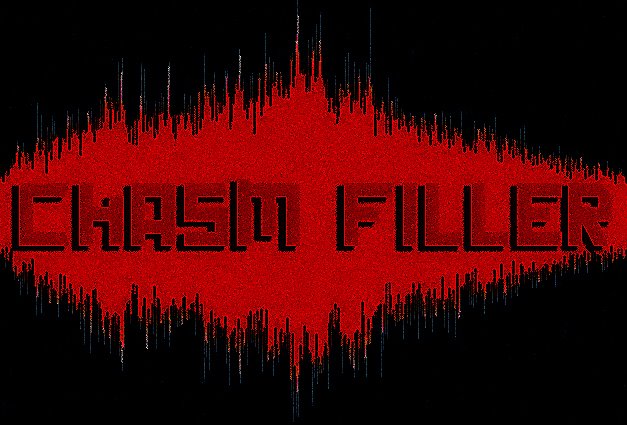
"Of all the protagonists of free jazz, Ohio-born tenor saxophonist Albert Ayler (1936) had the shortest career (he first recorded in 1962 and committed suicide in 1970 at 34), but he nonetheless managed to articulate one of the most radical aesthetics, second only to Cecil Taylor's. He often sounded like someone who wanted to create a virtuoso art out of anti-virtuoso playing. Ayler started out playing rhythm'n'blues. By the time he landed in New York, he had developed his idiosyncratic style (notably via an unrecorded European experience with Cecil Taylor in 1962). A quartet with trumpeter Norman Howard, drummer Sunny Murray and bassist Henry Grimes recorded Spirits/ Witches and Devils (february 1964), that contains four lengthy pieces: Spirits, the twelve-minute Witches and Devils, the eleven-minute Holy Holy and Saints. Each of them sounded like it was coming from a distant past, from a remembered childhood, as it incorporated simple, naive, catchy melodies. The performance was ferocious, though, as if Ayler wanted to contrast innocence and experience, or European order and African disorder. The live Prophecy (june 1964) introduced his trio with double bassist Gary Peacock and drummer Sunny Murray, and added Ghosts (his most famous theme), Wizard and Prophecy to his exoteric canon. That trio was responsible for one of the most revolutionary recordings of the era, Spiritual Unity (july 1964), the (brief) album that made it explicit how Ayler was not interested in creating music out of notes but out of timbres, how his music was not a harmonic construction but a "soundscape". These new versions of Ghosts, Spirits and Wizard were delivered according to an apparently demented logic that mixed melodies inspired by folk tunes and nursery rhymes with emotional bursts of saxophone noises simulating the human voice. Murray's percussions (more cymbals than drums) had little to do with keeping the time: they produced a flow of disorienting noises that intersected and amplified Ayler's saxophone noises. By now, Ayler had refined his melodramatic vibrato. The "free" approach permeated the two side-long improvisations of New York Eye And Ear Control (july 1964), AY and ITT, with the trio augmented with trumpeter Don Cherry on cornet, Roswell Rudd on trombone and John Tchicai on alto, although the result was far less tight than on Ornette Coleman's Free Jazz (1960), proving that Ayler was a different spirit from the free-jazz crowd. The trio and Don Cherry returned to a humbler format with Vibrations/ Ghosts (september 1964), that added Children (actually just a fast variant of Holy Holy), the moving ballad Holy Spirit (with a spectacular Cherry solo), Vibrations and Mothers to the canon, and The Hilversum Session (november 1964), that introduced Angels in a tense mid-tempo version. Donald Ayler replaced Don Cherry for the one-sided LP Bells (may 1965), containing just one 20-minute track (fundamentally a madcap medley of marches and nursery rhymes) also featuring altoist Charles Tyler and bassist Lewis Worrell besides Sunny Murray. Spirits Rejoice (september 1965), particularly its title-track (performed by Donald Ayler, Sunny Murray, altoist Charles Tyler, bassists Henry Grimes and Gary Peacock), marked a transition towards a more religious mood and a regression towards the collective improvisation of New Orleans' brass bands. Spirits Rejoice basically revisited the format of Bells in a more organic and structured way, picking up along the way an impressive amount of debris of musical stereotypes. Holy Ghost (july 1967) documents a live performance with Don Ayler on trumpet, Michel Sampson on violin, Bill Folwell on bass and Milford Graves on drums (particularly Truth Is Marching In/Omega and Our Prayer). Ayler considerably toned down his music on In Greenwich Village (december 1966) and Love Cry (august 1967), that featured Donald Ayler on trumpet, Call Cobbs on harpsichord, Alan Silva on bass and Milford Graves on drums, and eventually returned to his rhythm'n'blues roots. After some kind of hippie-like spiritual crisis, Ayler turned to jazz-rock, soul and funk music, adding lyrics by a vocal singer, notably on Music Is The Healing Force of the Universe (august 1969). By employing a virtually unlimited repertory of tricks and a rich vibrato, Ayler expanded the vocabulary of the saxophone, but, most importantly, he did so while staging a multi-dimensional regression to a simpler age of music (whether the catchy folkish melodies or the military tempos or the collective improvisation of the marching bands). Ayler seemed to fuse the musical background of the pre-industrial society with an impulse towards the expressionistic cacophony of the industrial society. At the same time, his saxophone often seemed to intone shamanic invocations except to derail into frenzied explosions of vitality. Underlying all these contradictions was Ayler's exploration of sound for the sake of sound, that accounted for a completely new idea of music, away from the pillars of harmony, melody and rhythm. That was, ultimately, an exploration of the human psyche. Thus, at several levels of introspection and metaphor, Ayler's art was a mirror of society. Ayler's was the music of the collective unconscious." - Scaruffi
He once said the patch in his goatee was evidence that God had marked him as someone who would change the course of history. He was right.
Love Cry



No comments:
Post a Comment